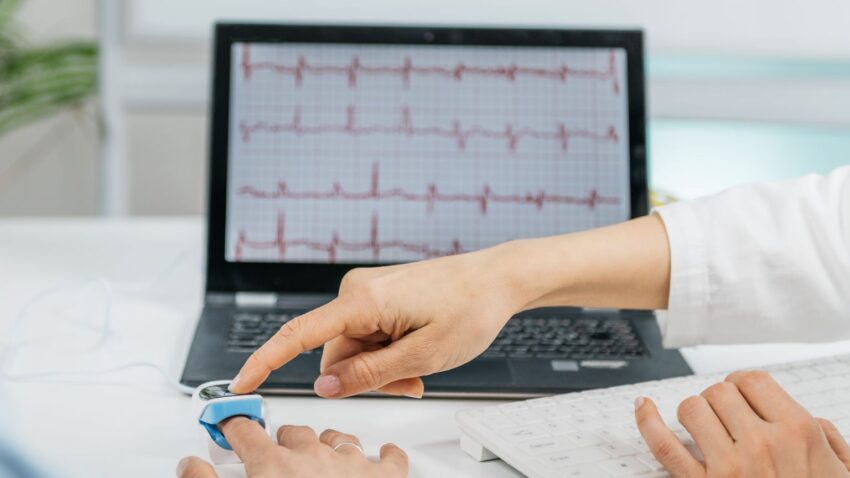Biofeedback is a technique that uses measurement instruments to help people learn how to control internal physiological responses like heart rate, skin temperature, and brain waves. By measuring one’s physiological activity using biofeedback instruments and providing real-time feedback, people can train themselves to control involuntary or unconscious bodily functions. Over time, with regular practice, biofeedback can help people address issues like stress, pain, heart problems, chronic disease and other conditions.
Physiological Processes Monitored by Biofeedback
Biofeedback instruments measure various physiological processes in the body:
Electromyography (EMG biofeedback): EMG measures muscle tension. It is commonly used to help people relax tense or painful muscles and treat conditions like tension headaches, back pain and bruxism (teeth grinding).
Thermography: Thermography measures skin temperature using infrared cameras. It is used to help increase peripheral skin temperature which signals the body to relax. Lowering overall body temperature through thermography biofeedback can help manage stress, anxiety and pain.
Electrodermal activity (EDA biofeedback): EDA measures sweat gland activity and skin conductance. It provides feedback on sympathetic nervous system arousal levels to help reduce stress and relax.
Plethysmography: Plethysmography measures changes in blood volume in the extremities through photo- or pressure sensors. It is commonly combined with other biofeedback modalities to provide a more comprehensive picture of physiological arousal.
Heart rate variability (HRV biofeedback): HRV biofeedback measures variations in heart rate patterns. By learning to control heart rhythm through slow, deeper breathing, people can reduce stress and improve heart health, mood and focus.
Electroencephalography (EEG biofeedback): EEG measures brain wave patterns. Different brain waves reflect various mental states. EEG biofeedback trains people to modulatebrain waves to enhance relaxation, focus, awareness and cognitive skills. It is used to treat conditions like stress, anxiety, ADD/ADHD, insomnia, substance abuse issues and brain injuries.
Types of Biofeedback Instruments
There are various Biofeedback Measurement Instruments used depending on the physiological signals being monitored:
– Electromyography (EMG) devices measure muscle activity through surface electrodes placed on the skin over the target muscle group.
– Thermometers use infrared sensors to measure skin temperature changes on the fingers, hands or other extremities.
– Electrodermal activity (EDA) instruments contain electrodes that record sweat gland and skin conductance responses.
– Plethysmography utilizes photo- or pressure sensors attached to the hands or fingers to detect blood volume changes.
– Heart rate monitors employ photoplethysmography sensors that clip onto a finger to track pulse and heart rate variability patterns.
– Electroencephalography (EEG) devices apply electrodes in a cap or headband format to record brain wave activity from multiple scalp sites.
Each instrument digitally displays and records the detected physiological signals to provide visual or auditory biofeedback to support learning and behavioral changes.
Biofeedback Process and Protocols
During a typical biofeedback session, the clinician will:
1. Attach the relevant biofeedback sensors or electrodes to monitor the targeted physiological process.
2. Calibrate the instrument and explain how to interpret the feedback display.
3. Instruct relaxation or self-regulation techniques like slow breathing, positive imagery or muscle relaxation to produce desired responses.
4. Provide ongoing feedback from the instrument’s display or audio tone to reinforce adaptive physiological changes.
5. Over successive sessions train skills like stress reduction, deep relaxation, attention control or symptom management at home through practice.
Most biofeedback protocols involve 8 to 12 half-hour sessions over several weeks. Home practice using portable biofeedback devices also improves skill retention. Clinical guidelines are followed for evidenced treatments of specific conditions.
Benefits of Biofeedback Training
Biofeedback offers various benefits when used under clinical guidance:
– Develops self-awareness of internal bodily functions not normally perceived.
– Enhances self-regulation skills to volitionally control involuntary physiological responses.
– Provides objective feedback to reinforce desired changes in stress levels, muscle tension, heart rhythm variability and other processes.
– Allows people to actively participate in their healthcare instead of passively receiving treatments.
– Has application for reducing stress, anxiety, chronic pain, heart issues, hypertension and more when combined with lifestyle modifications.
– teaches relaxation skills and strategies for managing symptoms that can be maintained independently outside of sessions.
– Shows lasting therapeutic benefits demonstrated in extensive clinical research trials over past 50+ years of use.
– Presents a low-risk, drug-free approach that empowers individuals in their self-care and long-term condition management.
As a non-invasive, drug-free technique, biofeedback has many advantages compared to reliance solely on medications for symptom management. By objectively quantifying internal physiology, biofeedback instruments provide critical feedback support for people to observe how their mind and body respond to stressors and interventions in real-time. When integrated into a comprehensive treatment plan involving lifestyle factors and cognitive-behavioral skills, biofeedback has proven effectiveness, safety and enduring benefits across many health conditions.

